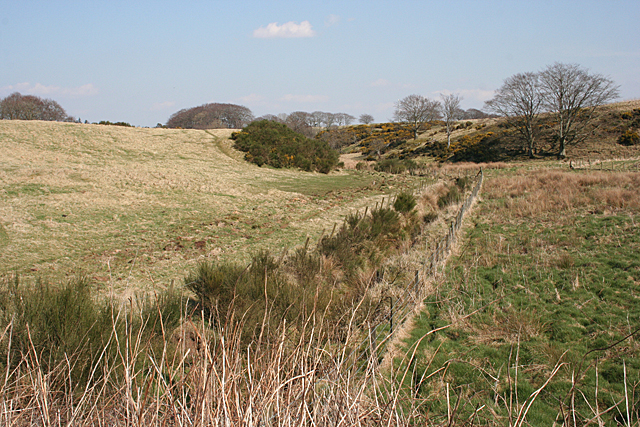Den of Woodhead
Valley in Aberdeenshire
Scotland
Den of Woodhead

Den of Woodhead is a picturesque valley located in Aberdeenshire, Scotland. Nestled amidst the tranquil countryside, this enchanting valley is renowned for its natural beauty and charm.
Surrounded by rolling hills and dense woodlands, Den of Woodhead offers a haven of tranquility for nature enthusiasts and hikers alike. The valley is home to a diverse range of flora and fauna, including native Scottish species such as red deer, red squirrels, and various bird species. The lush greenery and vibrant wildflowers that adorn the valley create a stunning backdrop for visitors to enjoy.
The valley is traversed by a meandering river, which adds to the serenity and beauty of the landscape. The crystal-clear waters of the river are a sight to behold, and visitors can often spot salmon and trout swimming upstream during the spawning season.
Den of Woodhead is also steeped in history, with several archaeological sites scattered throughout the area. These sites provide a glimpse into the past, offering insights into the lives of the ancient inhabitants of Aberdeenshire.
For those seeking outdoor activities, the valley offers numerous hiking trails that cater to all levels of fitness. The trails range from leisurely strolls to more challenging treks, providing ample opportunities for exploration and adventure.
With its idyllic setting and rich natural heritage, Den of Woodhead is a must-visit destination for anyone seeking solace in nature or a deeper connection with Scotland's wilderness.
If you have any feedback on the listing, please let us know in the comments section below.
Den of Woodhead Images
Images are sourced within 2km of 57.499861/-2.4764373 or Grid Reference NJ7145. Thanks to Geograph Open Source API. All images are credited.









Den of Woodhead is located at Grid Ref: NJ7145 (Lat: 57.499861, Lng: -2.4764373)
Unitary Authority: Aberdeenshire
Police Authority: North East
What 3 Words
///dumplings.playful.interlude. Near Turriff, Aberdeenshire
Nearby Locations
Related Wikis
Dorlaithers Castle
Dorlaithers Castle was a castle about 2.5 miles (4.0 km) south-west of Turriff, Aberdeenshire, Scotland at Dorlaithers, south of the burn of Gask. It may...
Auchterless railway station
Auchterless railway station was a railway station in Auchterless, Aberdeenshire. It served the rural area, the estate of Towie Barclay and a settlement...
Banff and Buchan (UK Parliament constituency)
Banff and Buchan is a constituency of the House of Commons, located in the north-east of Scotland within the Aberdeenshire council area. It elects one...
Turriff railway station
Turriff railway station was a railway station in Turriff, Aberdeenshire, Scotland. It was opened in 1857 by the Banff Macduff & Turriff Junction Railway...
Nearby Amenities
Located within 500m of 57.499861,-2.4764373Have you been to Den of Woodhead?
Leave your review of Den of Woodhead below (or comments, questions and feedback).










